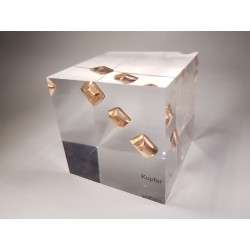- Shop
- Acrylic cubes
-
Elements
- Hydrogen
- Helium
- Lithium
- Beryllium
- Boron
- Carbon
- Nitrogen
- Oxygen
- Fluorine
- Neon
- Sodium
- Magnesium
- Aluminium
- Silicon
- Phosphorus
- Sulfur
- Chlorine
- Argon
- Potassium
- Calcium
- Scandium
- Titanium
- Vanadium
- Chromium
- Manganese
- Iron
- Cobalt
- Nickel
- Copper
- Zinc
- Gallium
- Germanium
- Arsenic
- Selenium
- Bromine
- Krypton
- Rubidium
- Strontium
- Yttrium
- Zirconium
- Niobium
- Molybdenum
- Technetium
- Ruthenium
- Rhodium
- Palladium
- Silver
- Cadmium
- Indium
- Tin
- Antimony
- Tellurium
- Iodine
- Xenon
- Cesium
- Barium
- Lanthanum
- Cerium
- Praseodymium
- Neodymium
- Promethium
- Samarium
- Europium
- Gadolinium
- Terbium
- Dysprosium
- Holmium
- Erbium
- Thulium
- Ytterbium
- Lutetium
- Hafnium
- Tantalum
- Tungsten
- Rhenium
- Osmium
- Iridium
- Platinum
- Gold
- Mercury
- Thallium
- Lead
- Bismuth
- Polonium
- Astatine
- Radon
- Francium
- Radium
- Actinium
- Thorium
- Protactinium
- Uranium
- Neptunium
- Plutonium
- Americium
- Curium
- Berkelium
- Californium
- Einsteinium
- Fermium
- Mendelewium
- Nobelium
- Lawrencium
- Rutherfordium
- Dubnium
- Seaborgium
- Bohrium
- Hassium
- Meitnerium
- Darmstadtium
- Roentgenium
- Copernicium
- Nihonium
- Flerovium
- Moscovium
- Livermorium
- Tennessine
- Oganesson
- Buch
- References
- Periodic Tables
- Metalle Wimmer
- Metametals
Copper
There are 2 products.
Active filters
Copper, with the chemical symbol Cu, is a crucial metal with a history dating back to prehistoric times. Discovered and utilized by humans over 10,000 years ago, the systematic extraction and use of copper began in the Copper Age, a transformative era for human development.
Copper is relatively abundant on Earth, constituting about 0.006% of the Earth's crust. It is found in various ores, primarily as copper pyrite, chalcopyrite, and bornite. The discovery and use of copper significantly contributed to the development of tools, weapons, and other crucial technological advancements.
Copper has diverse applications and is renowned for its high electrical conductivity. It is used in the electrical industry for cables, motors, and electronic devices. In the construction industry, copper is employed in piping and as a building material.
Future applications could emerge in renewable energy generation and electromobility. Copper plays a role in the production of solar cells, wind turbines, and electric vehicles, indicating a further surge in demand in an increasingly sustainable world.


